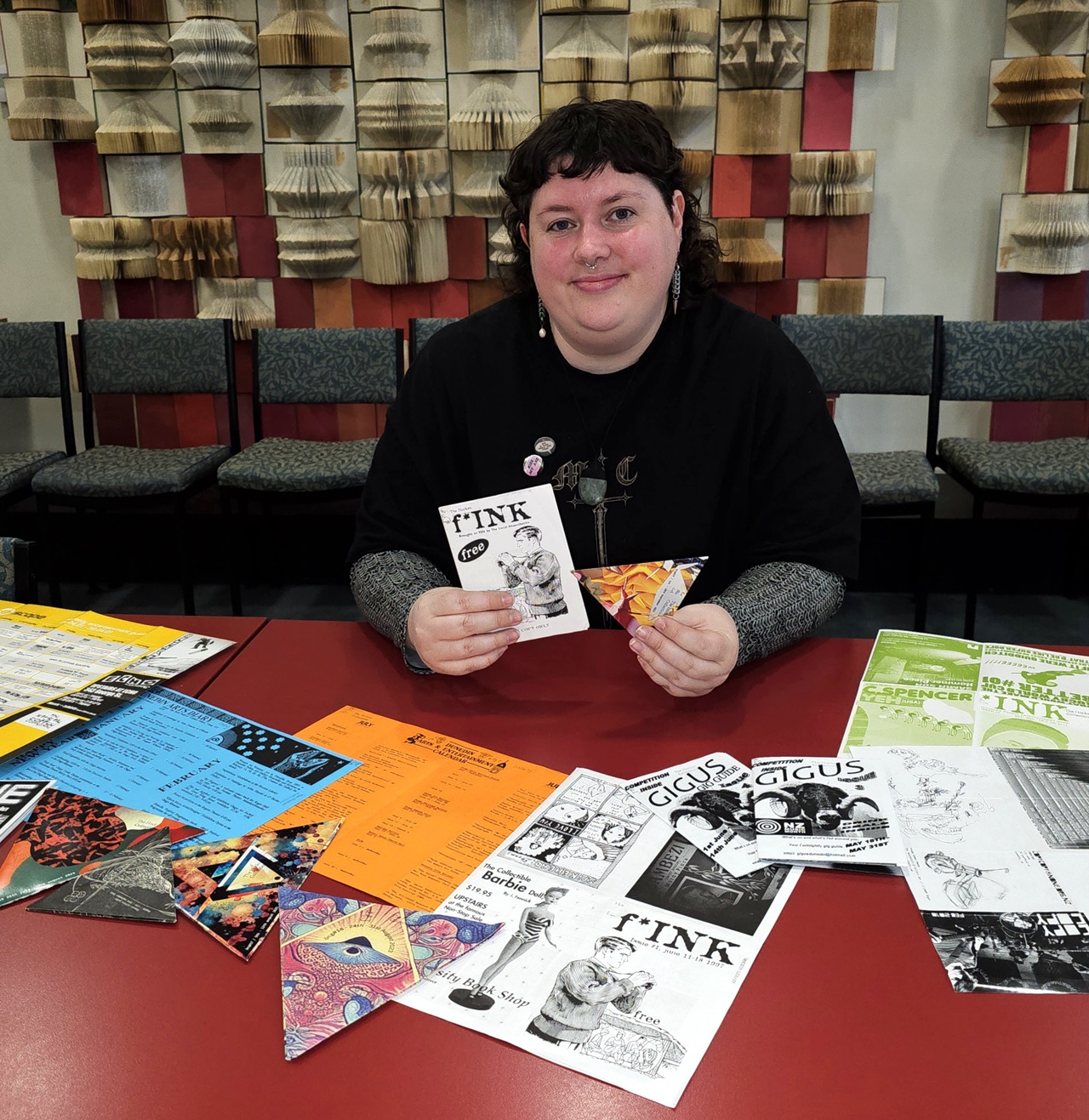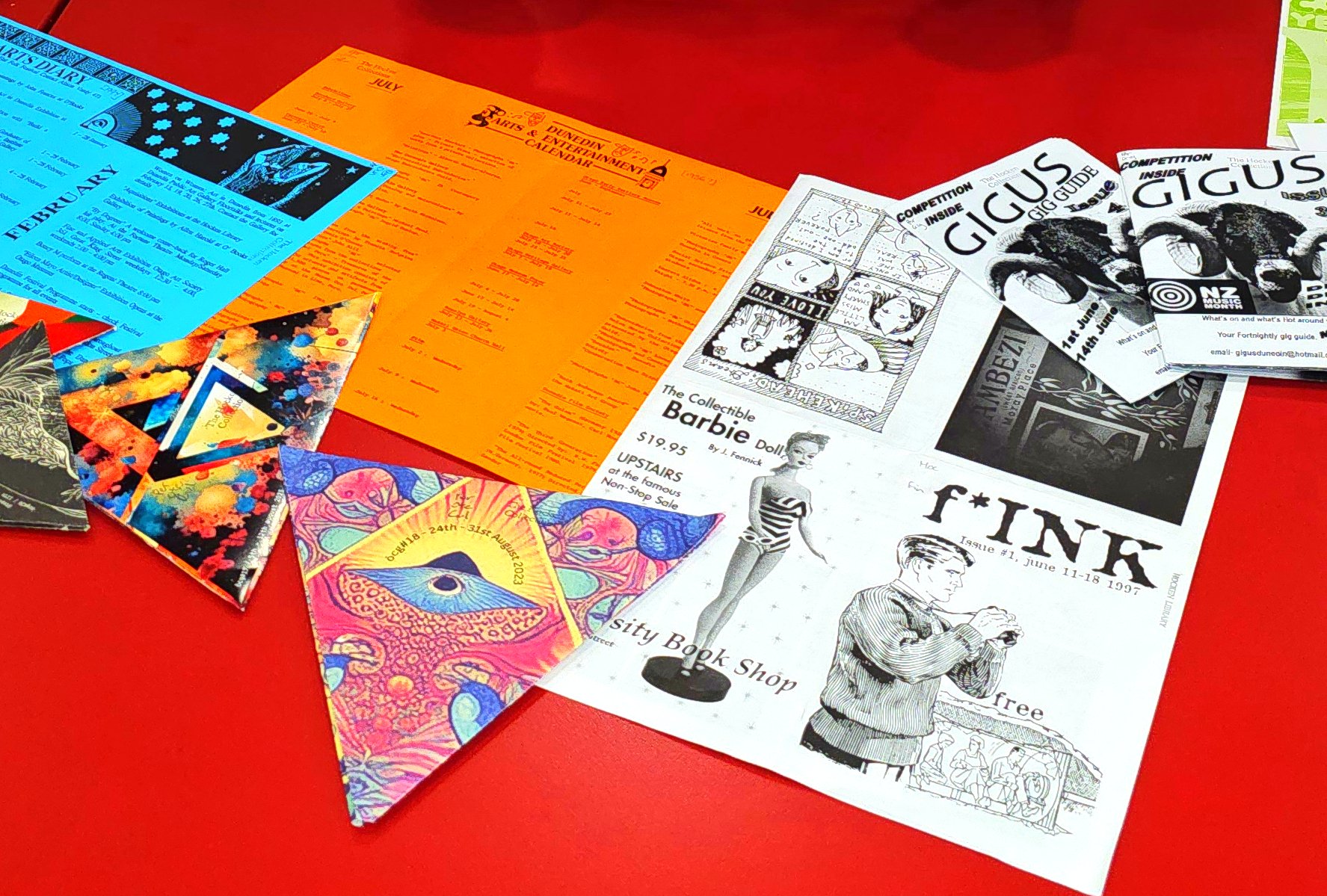
Hocken Collections Te Uare Taoka o Hākena collections assistant Gini Jory said entertainment and gig guides provided a useful glimpse into a moment in time.
The guides were usually printed on a single sheet, folded into a booklet, and listed events for a set period, often a week.
They often had a handmade look with original artwork or collages, showcasing artistic skill alongside information.
As well as gig listings, the guides included contemporary commentary in the form of cartoons, poems and opinion pieces.
A joke letter from former prime minister John Key to Rugby was obvious then but now needs some context to make sense.
The guides may not seem like historical artefacts, but many insights could be gleaned from the pocket-sized planners.
"I think it says a lot about how busy our arts and the culture was at a time — there’s things on every night; there’s things on every day.
"It tells you about what people are interested in — it tells you about what people are going to and how they are spending their time and how they are spending their money.
The guides were not expected to last long, but they could still provide rich information about a given period.
"That is how you do social history. That is why we have an ephemera collection."
The Dunedin Arts and Entertainment Calendar from 1986 was one of the earlier guides in the collection.
More straightforward than later guides, it offered a simple list of exhibitions, performances, lunchtime concerts and so on.
"That one is like ‘here is everything that is on, and that is all’."
F*ink was one of the longest-running guides, published from about 1996 until about 2009.

The New Weekly Entertainment Guide from the early 2000s included a Radio One column and a review of the American psychological thriller Memento.
A "Queen of the South" drag competition highlighted that there was still support for diversity in the city at the time.
Gigas from the 2007 proudly proclaimed "every fortnight we will bring you the info on the hottest events going on".
Even the advertising in the guides provided clues to the type of businesses operating at the time.
"You could kind of tell who had the money for the big advertisements."
A guide from 2008 called Glue provided a snapshot of the internet at the time, listing its MySpace page and a blog.
"I feel like that ages it nicely."
The guides served as a compact cultural compass, offering clues to what was on and who attended.
An event taking place at Otago Boys’ High School might attract teenagers and families.
"Whereas maybe DJ Alex and No Sleep Funk House Drum and Bass is probably quite student-orientated, I might imagine."
The guides seemed to have their heyday from the mid-1990s through to 2010.
Then it seemed there was a gap from about 2010 until a colourful origami-style fold-out, the Ōtepoti Culture Guide, appeared in 2023.
"I just think it interesting that there is a bit of a gap because I feel like that 2010 to maybe 2020 is like ‘peak internet’; everyone is chronically online.
"So does that indicate a change to online and then a change back to people wanting something tactile?"














